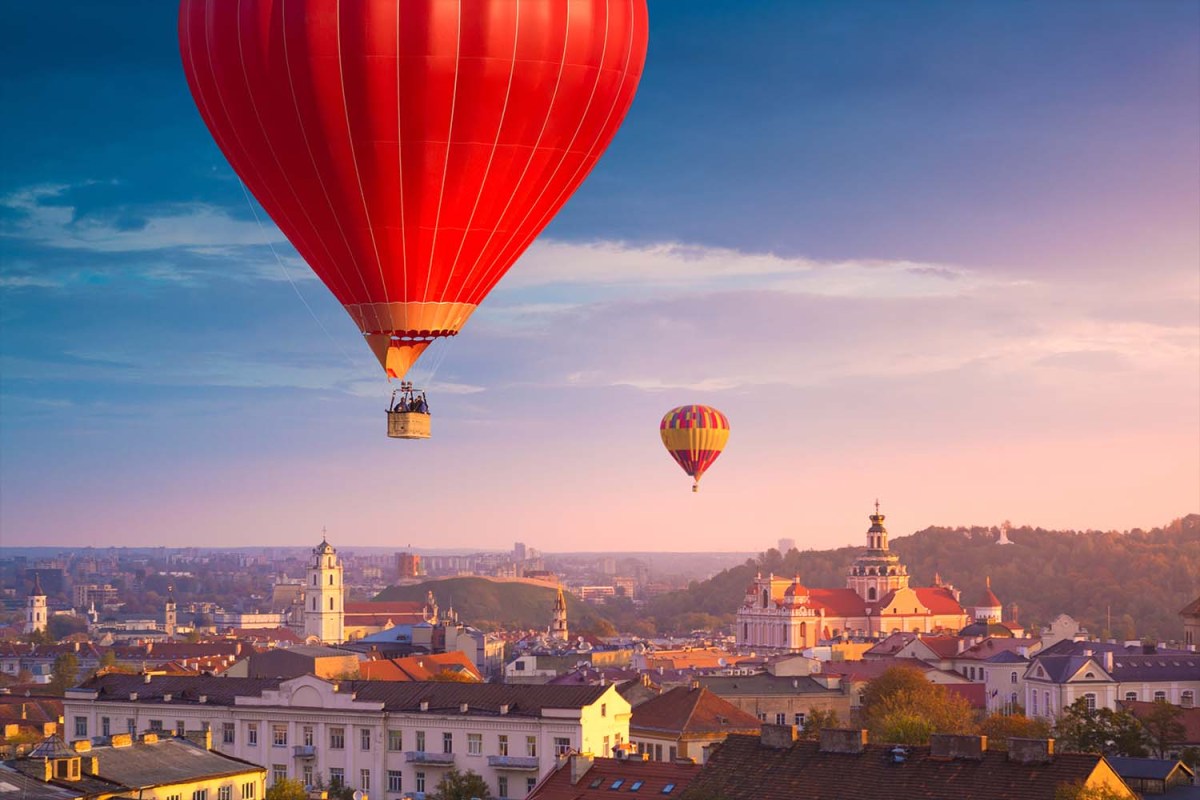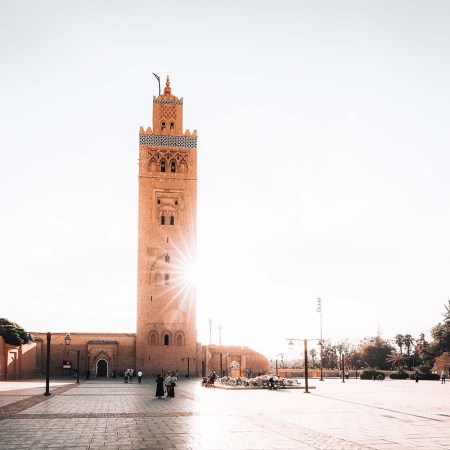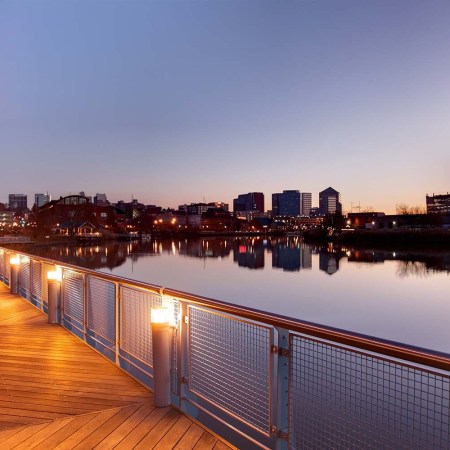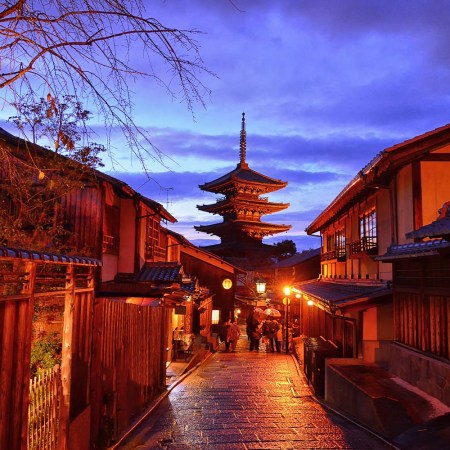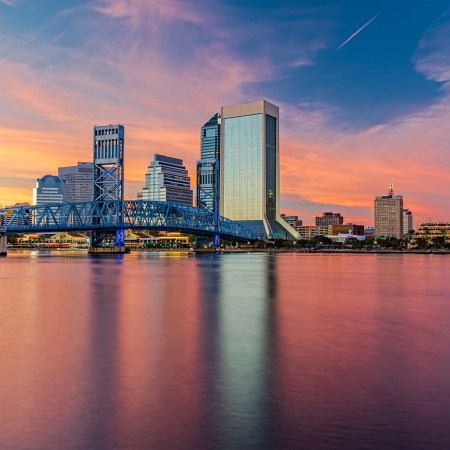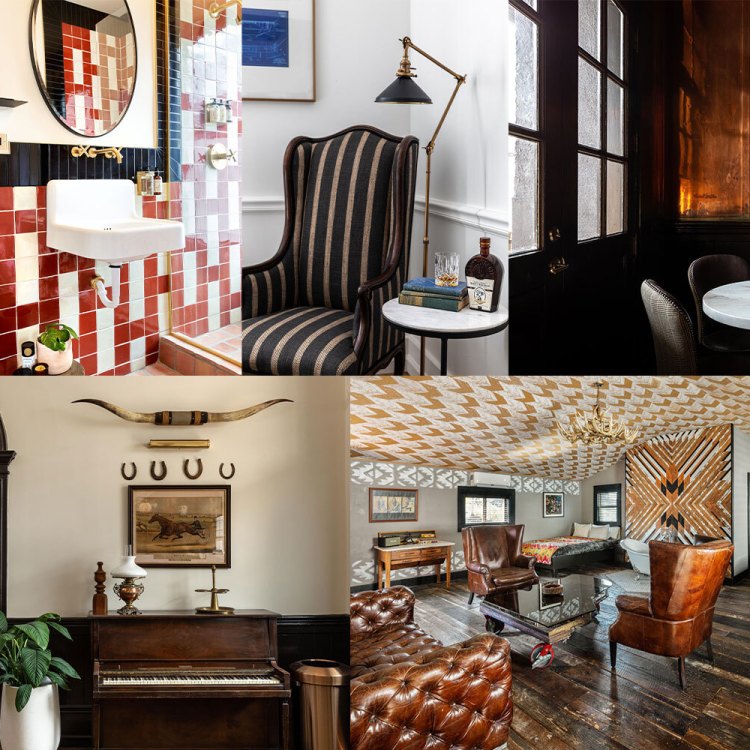A rather rare and perhaps unexpected event unfolded this year in Vilnius that you may have seen in the news. The NATO summit was held in Lithuania’s capital city in July, but we’re not talking about that. This was a far more festive occasion worth honoring. “Vilnius is celebrating its 700th anniversary, it’s a big year,” says Agnieska Kasinska, a local tour guide in the region. “We celebrate its birthday, too — it was on January 25.” Consider that 1624 marks the beginning of what would become New York City; by then, Vilnius already had three centuries in the books.
If you’re like most American travelers, you now probably know two things about Vilnius: it’s pretty old, and it’s the capital of a NATO country. Which might not compel you to book a trip to this Baltic city, but that would be a mistake. A historic Old Town only begins to sketch the outlines. What fills in the detail and color and brings the portrait of a city (you should without hesitation make an immediate plan to visit) to life are the innovative restaurants connecting that history with cutting-edge culinary arts, the loaded bar scene that will satiate your cocktail cravings and the abundance of pristine nature available in every direction.
You could say that Vilnius, 700 years young, is having its turn in the international spotlight at long last. But don’t think about it as the place you were surprised to hear was hosting a NATO meeting that one time. Let the modern city paint its own picture for you.
How to Get to Vilnius
Flights to Vilnius from the United States will be routed through the major continental European airport hubs. As opposed to western and central Europe, the Baltic states are not as well connected on the rail system, and buses are often the easiest city-to-city connectors (like between Vilnius and neighboring Riga, for example).
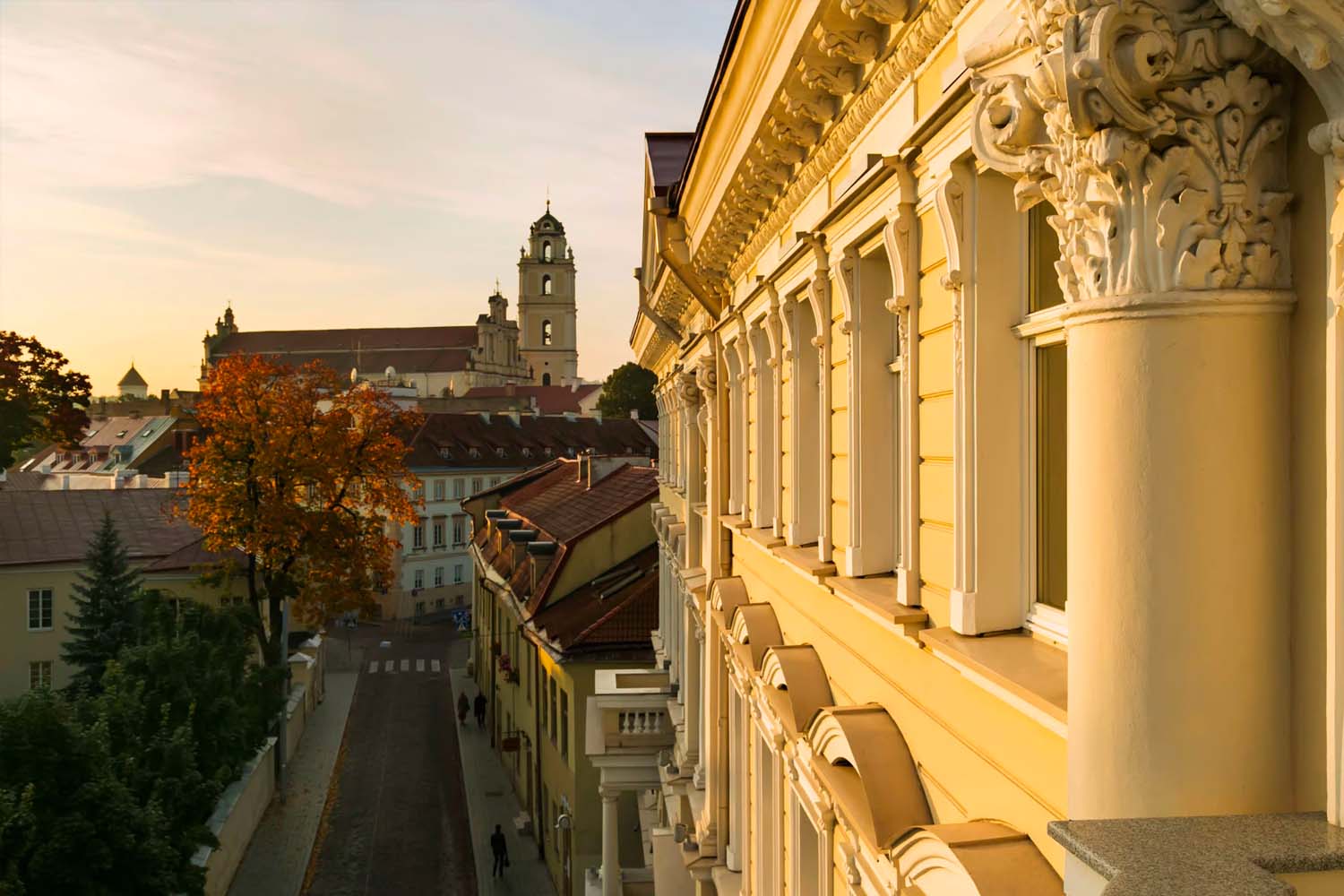
Where to Stay
The 96-room Grand Hotel Kempinski Vilnius is a venerated choice with positioning adjacent to the Vilnius Cathedral and all of the associated monuments and memorials across its vicinity. The property is the first luxury offering from Kempinski in the Baltic states, and it’s home to a number of recommended dining and drinking venues, including restaurant Telegrafas, Dukes Gastrobar and Atelier Wine Boutique. Telegrafas is named in homage to the building’s history — after opening as a hotel at the turn of the 20th century, it became the Central Telegraph of Vilnius.
For a different approach, check into Hotel Pacai, a member of Design Hotels. The boutique five-star is housed within a Baroque palace that was constructed in 1677 — Vilnius is a surprising hub for remaining Baroque grandeur — and blends that heritage with a contemporary luxe touch. Hotel Pacai is in a prime central location amid Old Town, which allows you to walk to any major site within minutes, and features a highly touted spa that has earned honors as being among the best in Lithuania.
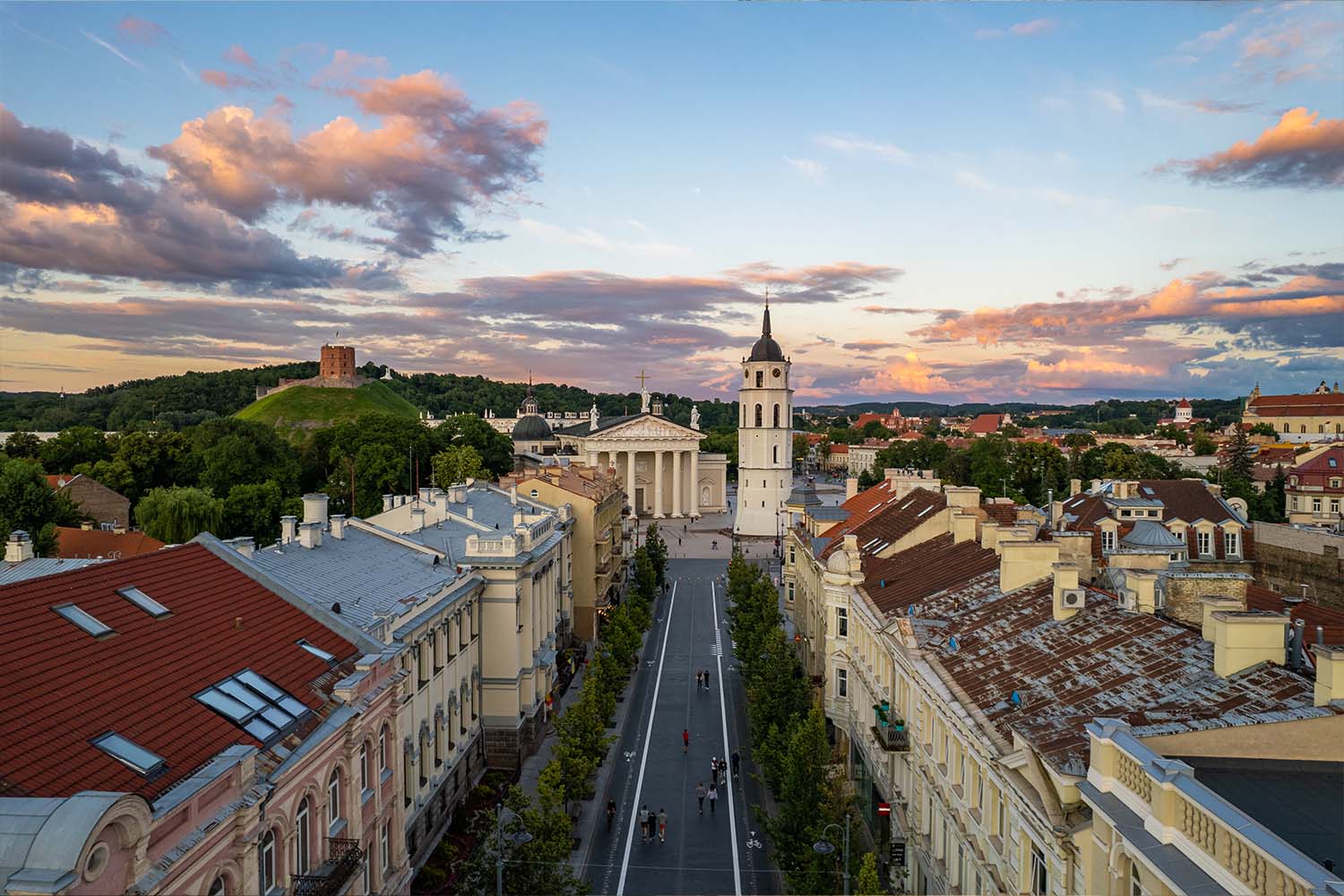
What to Do
Knock off the city’s major historic sites with a stroll around town starting at the central Town Hall and Town Hall Square. Visit the Gates of Dawn, an entrance to the walled city dating to the 1500s that’s home to a chapel with a prized painting of the Virgin Mary from the 17th century. Then head to Cathedral Square to take in the Vilnius Cathedral, its Bell Tower and the Palace of the Grand Dukes of Lithuania. If it seems like there is a grand church around every corner as you make your way, you’re not wrong. “I would describe Vilnius as a city of churches and theaters,” Kasinska says. “Theater culture is very strong here.”
The city was once filled with far more than churches and theaters, though, as it was home to more than 100 synagogues. Napoleon dubbed Vilnius “the Jerusalem of the north,” and while the Holocaust extinguished the vast majority of the country’s Jewish population and infrastructure, remnants can be seen with Hebrew writing on certain storefronts and the remaining Choral Synagogue built in 1903.
The Baltic states are each home to a KGB museum, courtesy of their time in the Soviet Union. The one in Vilnius, The Corner House, is said to be the best. Keep up the theme with a guided tour of the Lukiskes Prison. Dating back to the Russian Empire, the prison was in use as recently as 2019 but has been transformed into a cultural center.
Visit the hilltop Gediminas Tower, a piece of the original Vilnius Castle at the location of the city’s founding. According to lore, it’s the very site where Gediminas dreamed to build a great city. A short, steep climb offers a wonderful bird’s eye view of Vilnius, with the whole of Old Town to one side and the more modern swath of the city across the river to the other. There’s also a funicular you can ride to the top instead.
Another viewpoint can be found at the Three Crosses Monument, the namesake crosses of which have been constructed and destroyed numerous times dating back to the 17th century. There’s no funicular to save you on this one, but it’s worth the brief hike. For a longer one that’s accessible from the city, set your pin to Pūčkorių atodanga, an observation deck situated amid the Pavilnys Regional Park.
Getting the taste of the wilderness that stretches beyond Vilnius is one of the best ways to enjoy the city. When it’s hot in the summer, locals abandon town and retreat to its numerous lakes and lake beaches, such as Tapelių II paplūdimys or Gelo Beach. During colder stretches, lake life still plays a central role as sauna culture comes to the forefront.
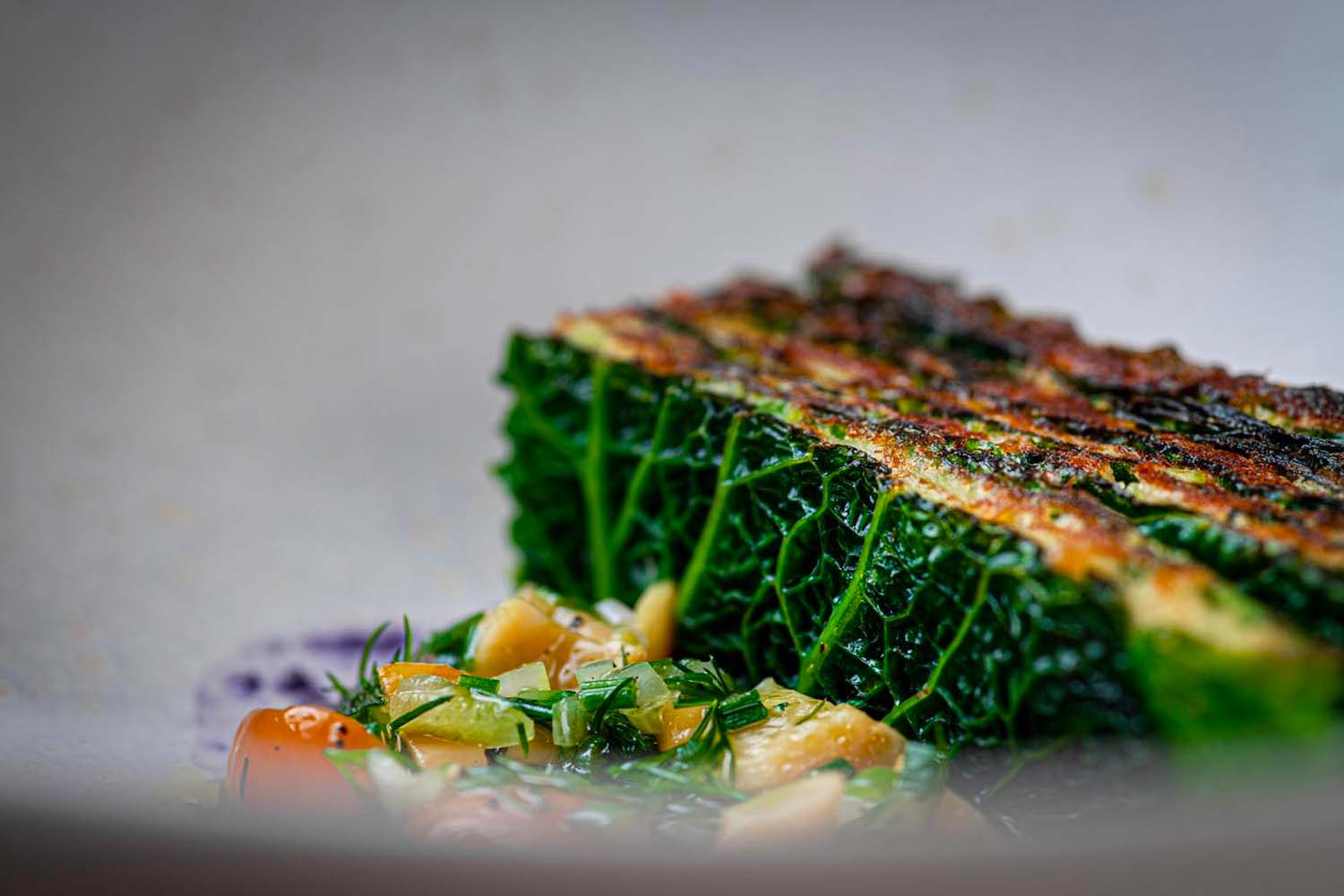
Most Importantly, Where to Eat and Drink
Start your eating adventures with a visit to the historic food market, Halės Turgus, or the Halle Market. “The market is the perfect place to try all of the local foods,” Kasinska says. I connected with her via ToursByLocals, a global hub for guides that earlier this year reached a milestone of serving two million travelers. Through the site, I told her I had one key objective: I wanted to eat my way across the Old Town. She delivered.
There are dozens of produce vendors and stands specializing in preserved meats and cheeses, pickles and fermented goods, bakery items and more, along with a number of food court-style vendors. Be sure to get your hands on specialties such as cepelinai, or zeppelins, weighty potato dumplings with assorted meat fillings. “It’s the most popular dish, it’s a must try in Lithuania,” Kasinska says. Round out a loaded spread with bright pink, cold beet soup and lašiniai, salted pork fat that’s kept on hand as a readymade snack for any time of day or night. “It’s our survival kit and like our fast food, too — everyone has it at home,” Kasinska says.
Elsewhere around town, you’ll see traditional bites often listed on menus with gloriously straightforward descriptors, such as wine snacks or beer snacks. Cheese and charcuterie are typical wine snacks and can be ordered as such; try a plate at Lokys. Greasier fried bites and dips are beer snacks, and you should head to the family-run brewery Busi Trecias for some of those.
The city’s Jewish history is perhaps best explored through its cuisine, and the joint Polish-Lithuanian Commonwealth is where most people pinpoint as the birthplace of the bagel. Vilnius has you covered. Head to Beigelistai for their crisp, chewy offerings — they’re known for their za’atar bagel among other things — and compare with the wares from Beigely Kravutuvele, which functions as a full Jewish bakery with challah and bialys in addition to bagels, alongside entrees such as shakshuka. At Baleboste, next to the food market, you’ll find fare ranging from bagels and pastrami to gefilte fish.
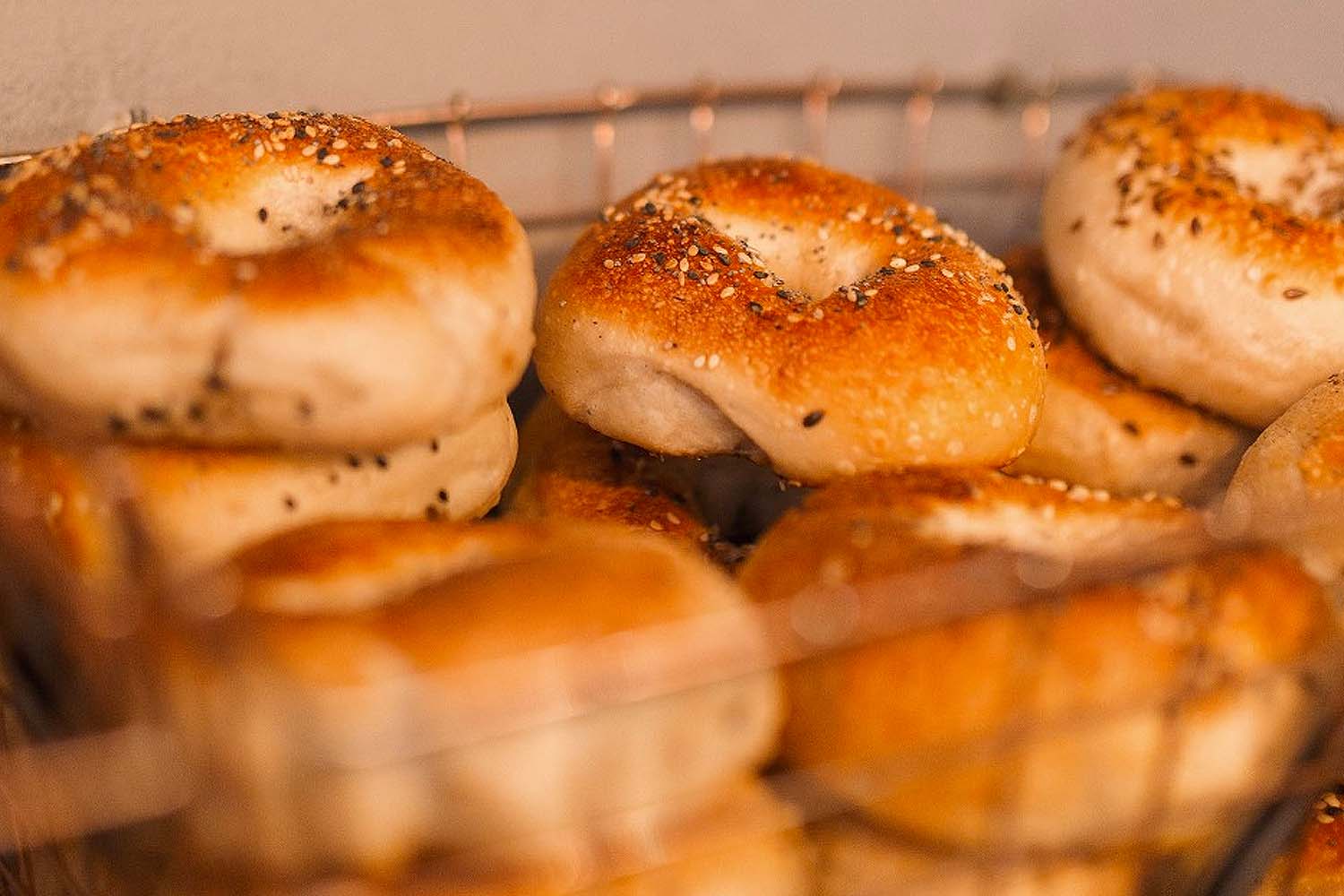
But as promised, there’s more to Vilnius than its past. And when it comes to food, one of the most captivating examples is from Nineteen18. Chef Andrius Kubilius offers up a refined 10-course tasting menu with wine pairings, showcasing local staple ingredients and reimagined “granny” dishes that illuminate Lithuania’s culinary and cultural history while carrying it forward. Dishes might include a venison tartare with black trumpet mushrooms or a “Lithuanian taco” served on a pressed bean tortilla with slow cooked pork. Perhaps I had my Serious Food Writer face on at the beginning of the meal, but I couldn’t help but revel in that dish. “Finally, we see you smiling!,” a sous chef said to me after I devoured the bite. The menu is a veritable bounty from the surrounding forests, farms, fields and waters, so if you thought Lithuanian fare was all softball-sized potato dumplings, you’re in for a lovely awakening. Don’t be in a rush to leave the restaurant after your meal, either. A sadistic, perhaps demonic stuffed rainbow unicorn is known to make a post-meal appearance and encourage guests to do shots of rare spirits.
Another exciting entrant is Amandus from chef Deivydas Praspaliauskas. The restaurant survived the pandemic by moving to a somewhat smaller, home-like locale and opening a gourmet deli alongside it. Here, a 10-course tasting menu combines new Nordic culinary techniques with Lithuanian flavors and the country’s multicultural influences. “It’s a meeting point of Nordic and Baltic cultures,” Praspaliauskas says. Signature dishes may have whimsical names, such as One Bite of Lithuania or Stranger Of The Night, but underneath the showmanship are beloved, traditional flavors and combinations. My dining companion told me on two occasions that a given dish reminded her of her grandmother’s food.
Both of those restaurants and their elaborate, satisfying, evening-long tasting menus have a price tag coming in at about $80 before drinks. If you still need another reason to come to Vilnius, keep that number in mind the next time you shell out $50 for a burger and beer in London or New York.
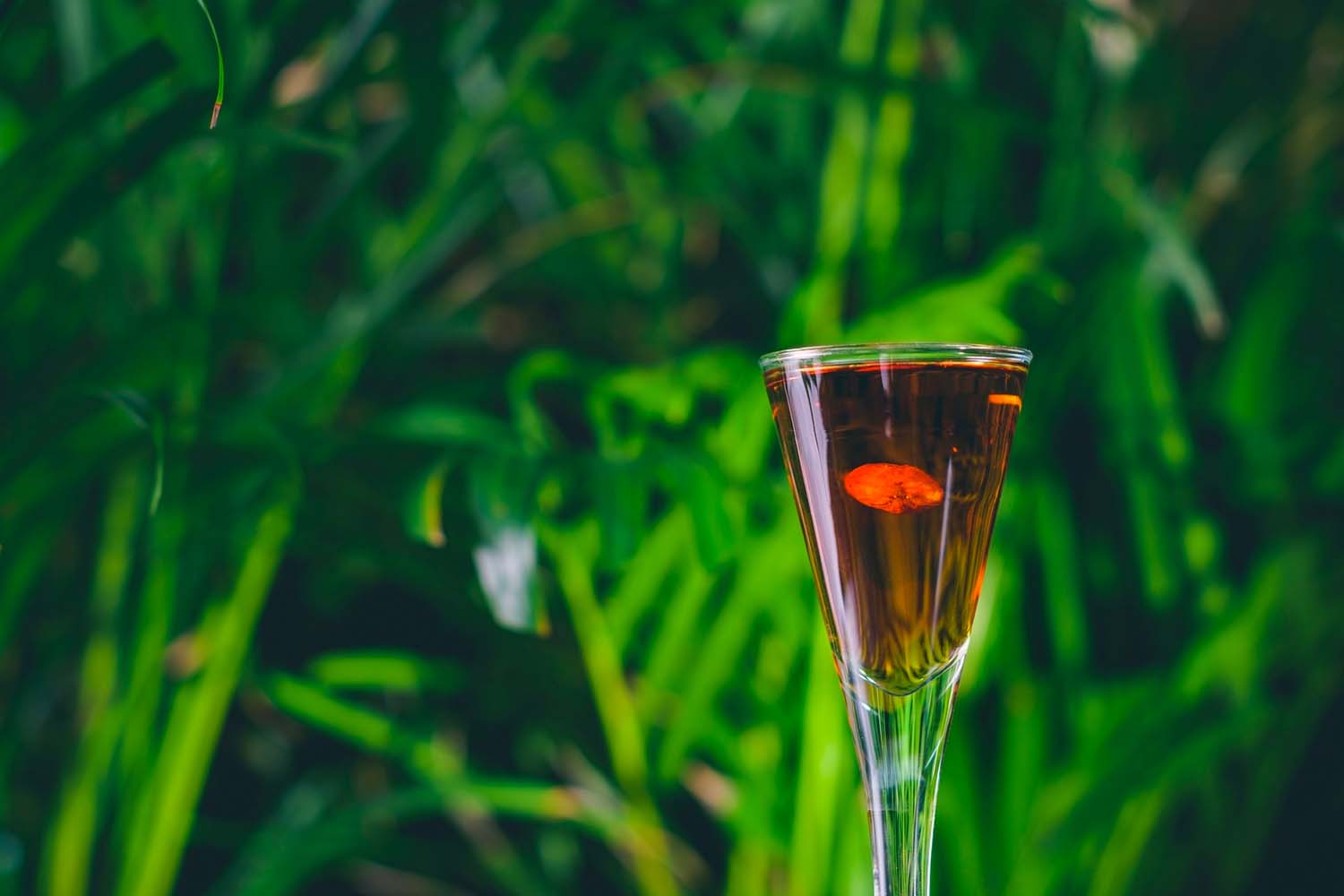
Lithuania’s flavors are also being put to excellent use behind its many high-end cocktail bars. For instance, a Cherry Daiquiri at Nomads Cocktail Bar is “the best way to try sour Lithuanian cherries,” according to head bartender Greta Skamaročiūtė. “We’re trying to work with what we have around us.” This philosophy means a constantly rotating menu that features a swath of herbal infusions and house liqueurs. Its comfortable bar space is reminiscent of a friendly gathering in someone’s living room, and its cocktails are precise and well executed. For a flavor experience that’s perhaps on the other side of your expectations, ask a bartender for a Jingle Bingle shot on your way out. The jolt of its odd ingredients can be best compared, I imagine, to the noted effects of a Pan Galactic Gargle Blaster, said to be akin to “having your brains smashed out by a slice of lemon wrapped round a large gold brick.” Good luck.
At Nick & Nora, you’ll also find local spirits and flavors put to good use, with everything from infused Lithuanian moonshine to quince, which the bar buys in an enormous four hundred kilogram load when it’s in season. Alchemikas is the original craft cocktail bar in town — at 11 years old, it may be one of the first in the Baltics — and is still going strong with a large cocktail book featuring different eras of classics.
The Whisky Shop & Bar by Duoklė Angelams is known for its deep whisky lineup and even imports spirits like mezcal into the country. Apoteka showcases thematic cocktail menus — a former rendition was presented as a foldable city walking map, and the current showcases drinks as video game characters squaring off with one another. After all of those cocktails, the only thing left to do is go to a proper dive bar and wash it all away. Who Hit John will get the job done.
I recommend sleeping it off, grabbing a bagel, taking a dip in a lake and starting the whole process once more.
This article was featured in the InsideHook newsletter. Sign up now.
